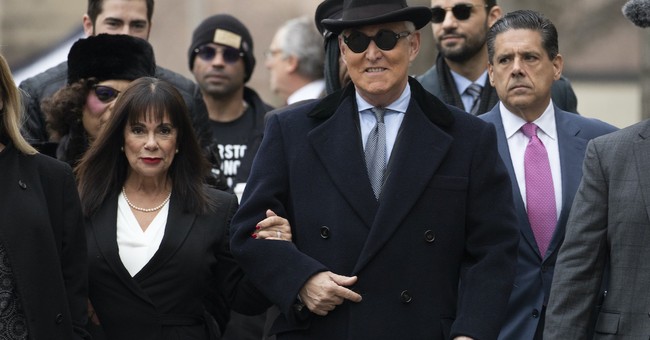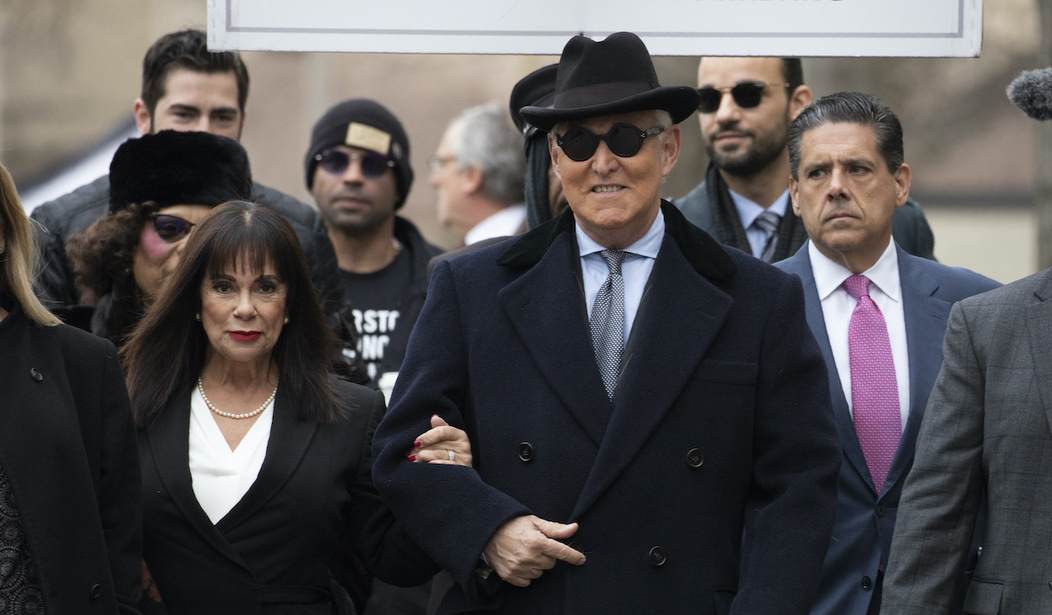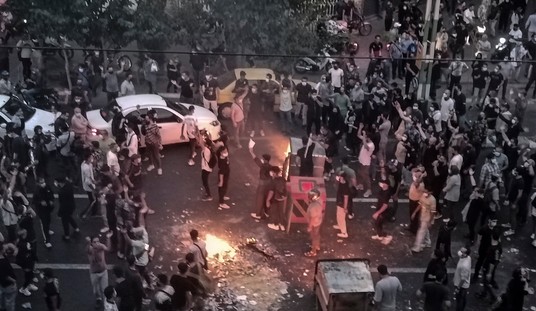
Aaron Zelinsky is now embraced as a “whistleblower” who has brought forward a tale of corruption and deception within the Department of Justice which allowed a long-time friend of President Trump to be sentenced to a term of imprisonment of 40 months – with the manipulation having been duplicitously inserted into the decision-making of a federal district judge appointed by President Barack Obama.
Aaron Zelinsky’s wants the country to believe it was improper “political influence” behind the decision to change the sentencing recommendation with respect to Roger Stone. To do so he claims for himself and the Stone trial team the “high ground” of having engaged in a completely legitimate exercise of prosecutorial decision-making in fashioning the sentencing recommendation he filed with the District Court.
But overlooked in all Zelinsky’s claims are the questions of whether the Sentencing Memorandum filed by Zelinsky was 1) legally appropriate, and 2) in compliance with DOJ policy on prosecutorial participation in sentencing? And how does it “fit” into the pattern of questionable filings made by the Robert Mueller Special Counsel’s Office over a series of cases pursued by them seemingly with the singled-purpose of hanging a “Russian Agent” sign around the neck of Donald Trump?
This is not a story that claims Roger Stone committed no crimes. Roger Stone took a series of volitional steps that landed him in the situation he finds himself. Had he not done those things, he would not be facing prison.
This is a story about the discretionary decision making by the government prosecutors in their “pursuit” of Roger Stone.
This will be a multi-part story looking at the prosecution of Roger Stone, ending with the dispute over the sentencing memorandum filed, then withdrawn, and supplemental sentencing memorandum filed after Zelinsky and three other members of the Stone Trial team filed notices of withdrawal from the case with the Court.
But let’s pause on this point for a moment and consider the fact that there was a Stone “trial team” in the first place, and what that tells us about the SCO in general, and the four members of the team in particular.
“Who are those guys?” — Butch Cassidy and the Sundance Kid
The Roger Stone trial lasted only 4 days, and the prosecution called only 5 witnesses — one of whom was an FBI agent who put into evidence various documents and communications that had been uncovered during the course of the investigation. Yet, there were FOUR prosecutors assigned to the case.
THAT, my friends, is a Joke. Individual prosecutors try cases alone that sometimes take weeks and involve dozens of witnesses. The reason for having more than one prosecutor usually is due to concerns about multiple defense lawyers when there are multiple defendants. In that circumstance there is an expectation that when there are two or more defense lawyers, they will file motions through the course of the trial, or the judge will ask for research/briefing on various issues that arise. The defense will often employ that approach as a “tactic” thinking they can overwhelm a single prosecutor, and what will suffer will be the prosecutor’s in-court presentation to the jury. It becomes difficult for one prosecutor to keep the flow of paperwork moving to the Court and also be prepared each morning for what is expected to happen in Court that day.
But having four prosecutors on a case involving a single defendant for a trial with only only 5 witnesses lasting less than 30 hours of total courtroom time is EMBARRASSING. In the offices I worked they would have never lived down the infamy of their participation. The AUSA’s would have ridiculed two Main Justice lawyers — or two SCO lawyers — who needed two MORE prosecutors to help them on a five witness case.
When you look at “who” the four prosecutors were, you can begin to understand the answer to the question of “why” there were four.
Two were from Mueller’s SCO — Aaron Zelinsky and Adam Jed — and two from the US Attorney’s Office for the District of Columbia — Michael Marando and Jonathan Kravis. Let’s deal with them separately:
From the SCO – Aaron Zelinsky and Adam Jed.
Before he made his way into federal service, Zelinsky was a “contributor” to the Huffington Post where he wrote glowing tributes to the policy changes adopted by Barack Obama following his victory in 2008. Aaron Zelinsky is a liberal Democrat. Full Stop. No debating the question. You can Google up the stories he wrote and see for yourself.
Zelinsky was first hired as an federal prosecutor in the summer of 2014, following a clerkship with Supreme Court Justice Anthony Kennedy — yes, 2014. In June of 2017 he was selected to be part of Robert Mueller’s “Dream Team” of Special Counsel Office prosecutors. At the time he was working as an Assistant US Attorney (AUSA) in the District of Maryland — where Rod Rosenstein was US Attorney from 2005 to late April 2017. As most know, Rosenstein was confirmed as Deputy Attorney General in late April 2017, and in that role he appointed Robert Mueller to be Special Prosecutor after the firing of Jim Comey.
It was Rosenstein who hired Zelinsky as an AUSA in 2014, and you can bet the rent money that Rosenstein had a big role in Mueller putting Zelinsky on his SCO staff, because nothing else about Zelinsky would “recommend” him for the job. Aaron Zelinsky might be a fine young man, and may some day be a solid federal prosecutor, but in June of 2017 he was a young prosecutor with training wheels still on his bike, likely tasked in the SCO with making sure the coffee was fresh in the morning, the pencils were sharp, and the computer printers had paper in them.
They did let Zelinsky handle the Papadopolous case before the Stone case — another example of the SCO “crapping out” in pursuing someone who really knew nothing/nobody having to do with supposed connections between Russia and the Trump campaign. The Papadopolous case was all a “pressure play” like so much else that the SCO did– the only purpose being to gain leverage over individuals in order to force them to cooperate and provide information implicating Pres. Trump in the Russian collusion they were all so confident existed. More on his decisions in the Papadopolos case later.
Adam Jed is an even MORE curious selection for the Stone “team.” Jed came to the SCO from the Appellate Section of the CIVIL Division of DOJ – he had no experience as a criminal prosecutor, and likely no trial experience at all (appeals don’t count — sorry my appellate friends). That meant – as you might guess – it was likely he had NEVER participated in a criminal sentencing proceeding before his involvement in the sentencing of Roger Stone. Jed was a Harvard law grad, had clerked for Justice Stevens on the Supreme Court, and had joined DOJ’s Civil Division in 2010. So, how does he end up on the Stone criminal trial? Probably the same way I ended up on my first criminal trial while I was still in the Civil Division of the US Attorney’s Office where I started out – by begging to be allowed to participate.
I noted from the various reporting on the trial that Jed wasn’t tasked with giving the opening statement (Zelinsky), closing argument (Kravis), or Rebuttal (Marando). I’m haven’t found anything solid yet on whether he examined any of the five witnesses.
The indictment against Stone was returned by the grand jury on January 24, 2019. The Mueller Report was delivered to DOJ on March 22, 2019 – only 57 days later. In the weeks before and after the delivery of the Mueller report to the Attorney General, some of the more prominent names with the SCO had already begun to depart for “greener pastures” in private practice. One of those, Jeannie Rhee, was originally involved in the Stone case up until she withdrew on April 19, 2019 — less than three months after the indictment.
So who got the “Lock the doors and turn out the lights when you’re done” assignment to continue the Stone case after the SCO was gone? Pretty much the two least experienced members of the SCO – Zelinsky and Jed.
From US Attorney’s Office — Michael Marando and Jonathan Kravis
When the SCO folded up its tent, the case was transferred to the supervision of the US Attorney’s Office for DC. One of the two AUSA’s in that office who joined the case, Mike Marando, told an interviewer that he was added to the Stone trial team because “they needed a third prosecutor.” Really — how many witnesses were too many for SCO prosecutors Zelinsky and Jed — “Dream Team” members — to handle on their own? Two? Three?
The interesting thing about Marando is that even though he’s a 2003 Cornell law graduate, it was 10 years later that he landed his first job as a federal prosecutor, having been hired in the US Attorney’s Office in 2013. In 2017 he was moved to the Fraud and Public Corruption Section, which is where the Stone case was parked. Out of law school he spent some time in private practice, and before being hired as a prosecutor he had been an in-house lawyer for the Department of Homeland Security.
The “fourth” attorney into the case was actually Marando’s supervisor – Jonathan Kravis — the Deputy Chief of the Fraud and Public Corruption Section. He had approximately nine years experience at the time.
In my experience, a Dep. Chief only joins a trial team when he is concerned that the trial team might not be up to the task if left on their own. And Kravis didn’t just join to sit back, watch over them, and make sure their ties were on straight – he gave the closing argument. So Kravis — and maybe his supervisor — felt like he was needed on a case with 5 witnesses and one defendant. To me, that is a vote of “No Confidence” in the THREE guys already working the case.
The investigation of Stone was done by the SCO from start to finish, but the prosecution of Stone moved to the US Attorneys’ Office probably in February or March. Two prosecutors who had no contact with the investigation – Marando and Kravis – end up giving the Closing Argument and the Rebuttal after only being on the case for 8 months. Zelinsky gave the Opening Statement – of the 3, the Opening Statement is the least consequential because it is not an “argument.” What does THAT tell you about Kravis’ view – or Kravis’ supervisor’s view – of Zelinsky and Jed from the SCO? Neither was entrusted with the important closing and rebuttal arguments.
I had ONE experience in my career where a supervisor was part of my trial. My wife was pregnant and her due date was during the two weeks the trial was expected to last. The Judge wanted a “safety net” in place in the event my wife went into labor while the trial was under way – which she did. My supervisor sat through 6 trial days working on things from other cases and generally ignoring what I was doing. When I went MIA, he gave the closing argument I had already sketched out in notes, and got the “Save” on the conviction.
Of the four Stone “team” members, Kravis had the most direct political connections. Before joining DOJ he had worked in the Obama White House Counsel’s Office for a year. The White House Counsel does not staff his office with Deputies who are members of the opposition party.
The Stone case was an “orphan.” The “Russiangate” investigation was done, and nothing was expected to come out of the Stone case to advance that fantasy — the SCO had already determined there was no “collusion.” The report was in the final stages of drafting, Mueller wanted to get back to retirement, and the prominent members of the SCO staff had big firm partnerships waiting for them. So in Jan. 2019 when Stone was indicted, the SCO was in the process of wrapping up the “loose ends.” Even though Stone had not lied to the SCO, someone in the SCO decided that Stone would be made to answer for misleading Congress. Not by referring the matter to the US Attorney’s Office in DC which would ordinarily handle such cases, but by indicting the case on their own.
Why not leave that decision to the US Attorney in DC? If the case was going to be dropped into the lap of the US Attorney anyway, why deprive that DOJ Official of the decision of whether to bring the case in the first instance? If there was no “conflict of interest” that prevented the US Attorney in DC from handling the case after it was filed, what conflict of interest could there have been for not allowing the same US Attorney to participate in the decision of whether or not to file?
It beggars belief to claim that the Stone prosecution by the SCO on its way out the door was anything other than a “stick in the eye” to the President. Roger Stone was the surrogate for Donald Trump. His prosecution was the stand-in for the prosecution of Donald Trump that the SCO’s office was not able to pull off.













Join the conversation as a VIP Member